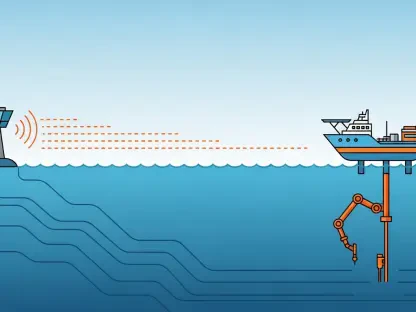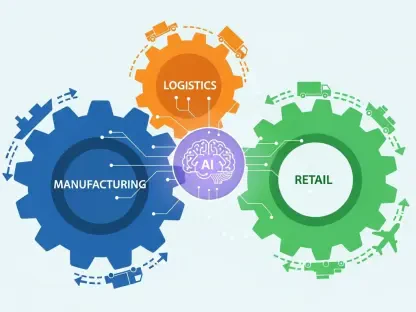Understanding Eco-Driving and Its Importance in Urban Traffic
Imagine a bustling city intersection where countless vehicles idle, spewing carbon dioxide into the atmosphere, contributing to a staggering 15% of CO2 emissions from U.S. land transportation, highlighting a critical challenge in urban centers today. Traffic congestion not only wastes time but also harms the environment, making eco-driving a promising strategy to address this issue, particularly at signalized intersections, by encouraging drivers to adjust speeds dynamically to avoid unnecessary stops and rapid accelerations, thus curbing energy use and emissions.
At its core, eco-driving involves techniques and technologies aimed at optimizing vehicle operation for fuel efficiency and reduced environmental impact. In the context of U.S. cities, where intersections are hotspots for idling and stop-start driving, this approach holds immense potential to mitigate pollution. The relevance of such measures is heightened by the pressing need to combat climate change, making eco-driving a vital tool for sustainable urban mobility in densely populated areas.
Key stakeholders, including researchers, urban planners, and policymakers, are increasingly recognizing the value of integrating advanced technologies like artificial intelligence and vehicle-to-infrastructure communication into eco-driving frameworks. These innovations can provide real-time speed guidance through dashboards or apps, paving the way for broader adoption. As urban traffic continues to grow, collaboration among these groups becomes essential to transform eco-driving from a concept into a widespread practice that reshapes city transportation dynamics.
The Impact of Eco-Driving on Emissions Reduction
Key Trends and Technological Innovations
In the realm of sustainable transportation, eco-driving stands out as a near-term, low-cost solution that can be implemented without extensive infrastructure changes. Unlike long-term projects requiring significant investment, this approach leverages existing vehicle systems and consumer technologies to promote smoother driving patterns. Its accessibility positions it as a critical component of broader efforts to reduce the transportation sector’s environmental footprint.
Technological advancements are driving the evolution of eco-driving, with deep reinforcement learning emerging as a powerful method to optimize driving behaviors for energy efficiency. Consumer adoption is also gaining traction through user-friendly interfaces like smartphone apps and in-vehicle displays that offer real-time speed recommendations. These tools empower drivers to make informed decisions, fostering a culture of sustainability on the road.
Market drivers such as growing environmental urgency and the potential integration with autonomous vehicle systems further bolster the case for eco-driving. As cities prioritize green initiatives, the alignment of this strategy with automated driving technologies offers a glimpse into a future where emissions reductions are seamlessly embedded in transportation systems. This synergy presents a unique opportunity for industry players to innovate while addressing pressing ecological concerns.
Data Insights and Projections
Research findings highlight the transformative potential of eco-driving, with studies indicating that full adoption could reduce intersection emissions by 11% to 22% across various U.S. cities. Even more striking is the impact of partial adoption, where just 10% of vehicles employing eco-driving can achieve 25% to 50% of the total possible benefits due to the ripple effect on surrounding traffic. These figures underscore the scalability of this approach even with limited participation.
City-specific data reveals variations in outcomes based on urban layouts and driving conditions. For instance, Atlanta, with its higher speed limits, stands to gain more significant reductions compared to denser urban environments like San Francisco, where combining eco-driving with electric vehicle use could amplify cuts by up to 17%. Such insights emphasize the need for tailored strategies that account for local characteristics to maximize environmental gains.
Looking ahead, projections suggest that eco-driving could scale effectively across diverse urban settings, with targeted interventions at just 20% of intersections delivering 70% of the total emissions benefits. This phased approach, combined with the influence of car-following dynamics, indicates that small changes can lead to substantial improvements in traffic flow and air quality over time, setting a foundation for broader sustainability initiatives.
Challenges in Implementing Eco-Driving Solutions
The path to widespread eco-driving adoption is not without hurdles, as benefits can vary significantly depending on urban layouts and traffic patterns. Cities with complex intersection designs or high congestion levels may see inconsistent results, requiring customized solutions to ensure effectiveness. This variability poses a challenge for planners aiming to standardize eco-driving practices across diverse regions.
Safety concerns also loom large, as altering driver behaviors to prioritize emissions reduction could introduce risks if not carefully managed. Additionally, the computational complexity of modeling citywide traffic scenarios demands significant resources and expertise, potentially slowing down implementation efforts. Balancing these factors with the need to maintain smooth traffic throughput remains a critical consideration for successful deployment.
To address these obstacles, phased implementation strategies are proposed, such as focusing on a select number of intersections to achieve a majority of benefits. Prioritizing research into safety implications and driver adaptation will also be crucial to mitigate potential risks. By adopting a gradual, evidence-based approach, cities can refine eco-driving solutions to align with both environmental and operational goals.
Regulatory and Safety Considerations for Eco-Driving
Navigating the regulatory landscape is essential for integrating eco-driving into urban traffic management systems. Existing standards for vehicle efficiency and emissions provide a foundation, but there is a growing need for updated policies that support technological advancements in this space. Governments at local and national levels must adapt frameworks to encourage the adoption of eco-driving measures while ensuring compliance with environmental targets.
Safety metrics play a pivotal role in shaping the acceptance of eco-driving practices, as any strategy must prioritize the well-being of road users. Current assessments suggest that eco-driving aligns with standard safety benchmarks, yet continuous evaluation is necessary to address unforeseen impacts on driver behavior. Policymakers are tasked with creating guidelines that harmonize emissions goals with road safety imperatives.
The influence of regulatory changes on industry practices cannot be understated, as incentives for eco-driving could drive urban planning and infrastructure investments. By aligning funding and policy support toward sustainable traffic solutions, authorities can catalyze the integration of eco-driving technologies. This shift has the potential to redefine how cities approach transportation, embedding environmental consciousness into the core of urban development.
Future Directions for Eco-Driving and Sustainable Transportation
As eco-driving gains momentum, its role as a complement to broader decarbonization strategies becomes increasingly apparent. Pairing this approach with the expansion of electric vehicle adoption offers a dual pathway to cleaner transportation systems. This synergy could significantly enhance emissions reductions, particularly in cities already transitioning to greener fleets.
Emerging technologies, such as vehicle-to-infrastructure communication tailored for autonomous vehicles, promise to elevate the effectiveness of eco-driving. Alongside innovations in AI modeling, these advancements can refine traffic optimization at a granular level. Market disruptors, including new entrants focused on smart mobility solutions, are also poised to accelerate the evolution of eco-driving applications.
Influencing factors like global environmental goals and shifting consumer preferences toward sustainable practices will shape the trajectory of eco-driving. As public awareness of climate issues grows, demand for accessible, impactful solutions is expected to rise. This trend, coupled with ongoing technological progress, suggests a future where eco-driving becomes a cornerstone of urban sustainability efforts.
Conclusion: The Promise of Eco-Driving for Cleaner Cities
Reflecting on the extensive analysis, eco-driving proves to be a viable and impactful intervention for reducing vehicle emissions at intersections, with studies showing substantial benefits even at partial adoption rates. The scalability demonstrated through targeted implementations at select intersections offers a practical roadmap for cities aiming to improve air quality. Moreover, the integration of advanced technologies like AI and vehicle communication systems highlights a clear path toward enhancing effectiveness.
Looking beyond the immediate findings, actionable steps emerge as critical for sustained progress. Policymakers are encouraged to develop supportive regulations and incentives that facilitate eco-driving adoption while prioritizing safety research to address behavioral impacts. Urban planners need to focus on integrating eco-driving into traffic management systems, potentially through pilot programs in high-impact areas.
For researchers, the challenge is to deepen investigations into cross-city variations and long-term environmental outcomes, ensuring that eco-driving solutions remain adaptable to evolving urban landscapes. By aligning these efforts with other sustainability initiatives, such as electric vehicle expansion, stakeholders can unlock compounded benefits, paving the way for cleaner, more resilient cities in the years ahead.









